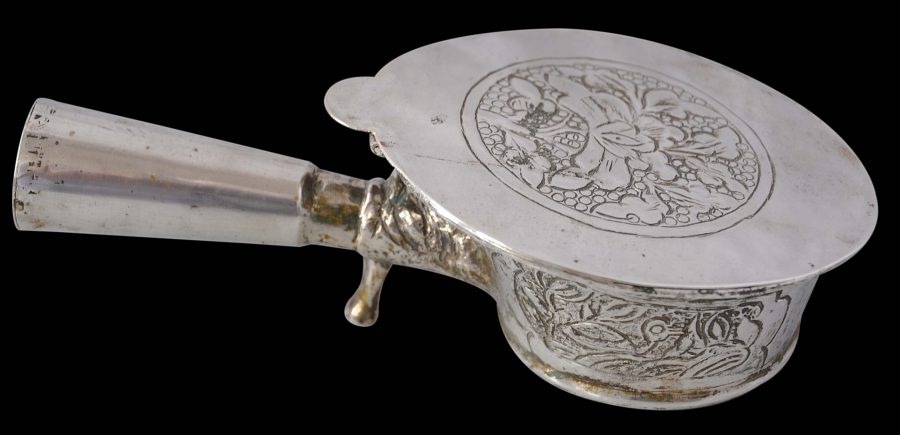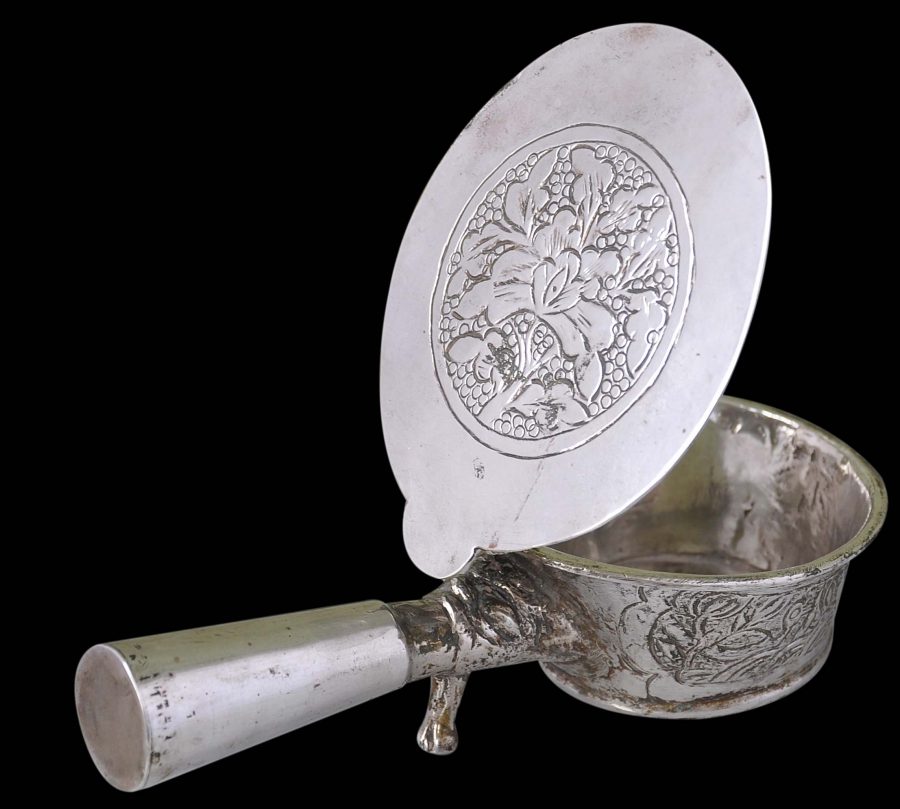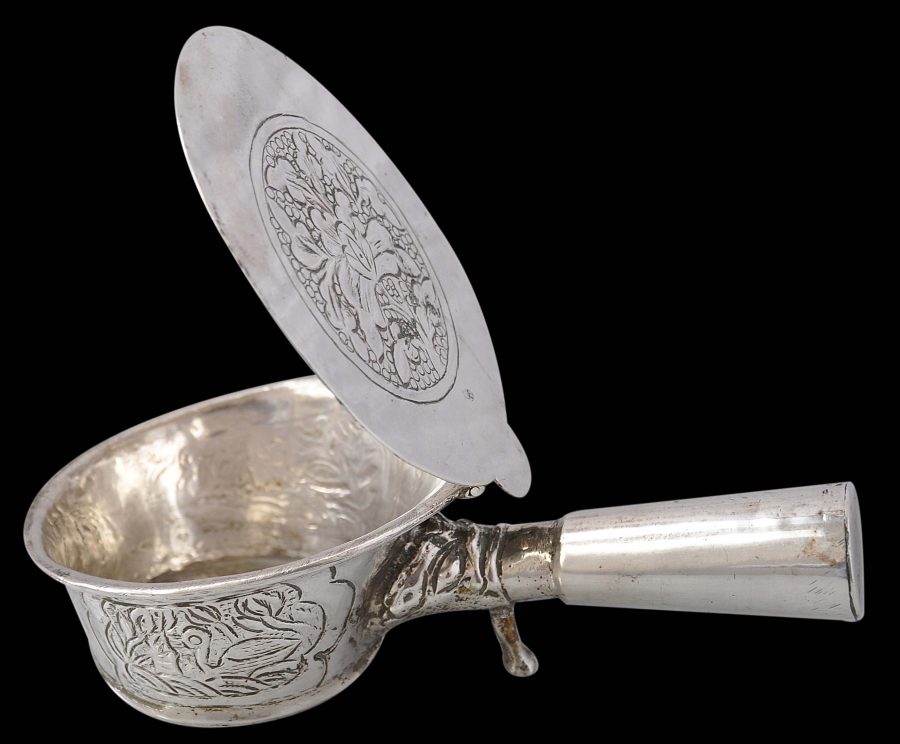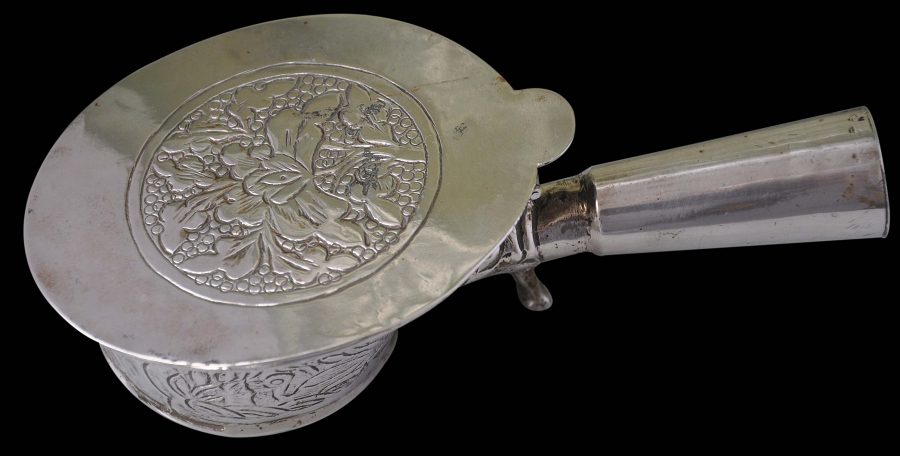This highly unusual item is of South or Central American workmanship but emulates a Chinese implement – a pan iron – commonly used in China to iron or smooth out articles of clothing made from silk. Such pans usually were made or bronze and were filled with hot coals and then run over the silk to flatten out the creases. This example, made of heavy, high-grade, solid silver, probably was made to carry coals as part of the process of brewing mate, the indigenous, tea-like brew. Or it might have indeed been used to smooth out creased silk.
The hinged lid is engraved with a roundel filled with a chrysanthemum-like flower. The sides of the pan are engraved with cartouches infilled with floating ducks. The front of the pan is decorated with an engraved ‘Shu’ or Chinese long-life symbol.
The long handle is smooth and unadorned. A cast foot extends from the handle to better steady the device.
There was significant Chinese influence in Mexico and South America on account of the so-called Galleon Trade whereby Spanish trade ships brought in trade goods from Manila, China and India in exchange for locally-mined silver. The influence was more direct too – large numbers of ethnic Chinese fled to Mexico from Manila to escape anti-Chinese massacres, silversmiths no doubt were among them.
The renderings of the motifs on the silver pan here are somewhat naive. Perhaps because the item was the product of a local Chinese long-estranged from his roots in Asia, or it was the product of an indigenous silversmith copying a Chinese item but without close familiarity.
No similar item of South American silver appears to have been published.
The item has a splendid patina, and the silver has the ‘rawness’ associated with high-grade, freshly-mined South American silver of the eighteenth century. The item came from a collection of South American silver in the UK. Overall, it is a highly unusual but evocative syncretic product of the Galleon Trade.
References
Davis Boylan, L., Spanish Colonial Silver, Museum of New Mexico Press, 1974.
Luis Ribera, A., & H.H. Schenone, Plateria Sudamericana de los Siglos XVII-XX, Hirmer Verlag Muchen, 1981.





